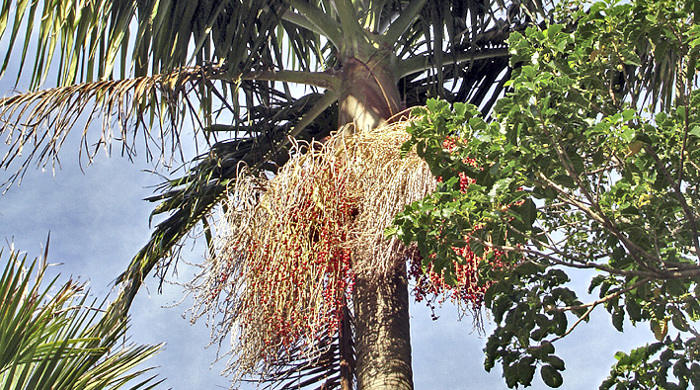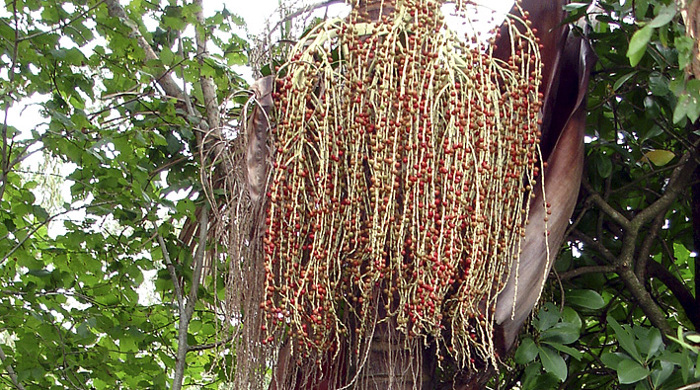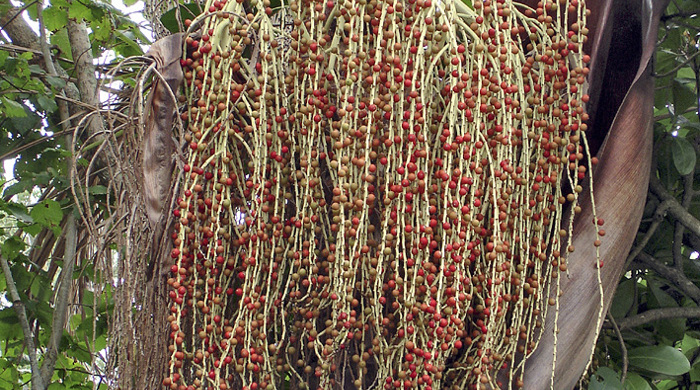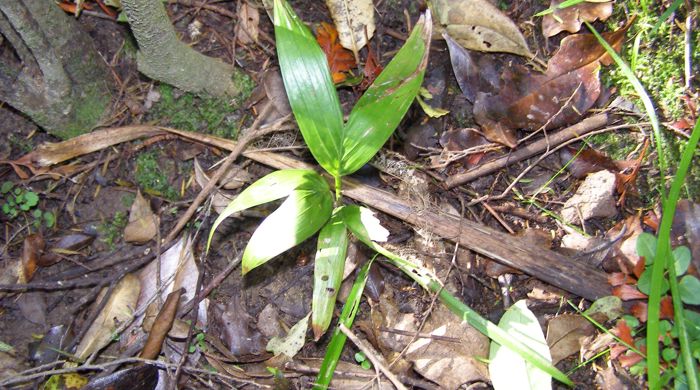Archontophoenix cunninghamiana
Bangalow palm
Family: Aracaceae
Origin: Australia
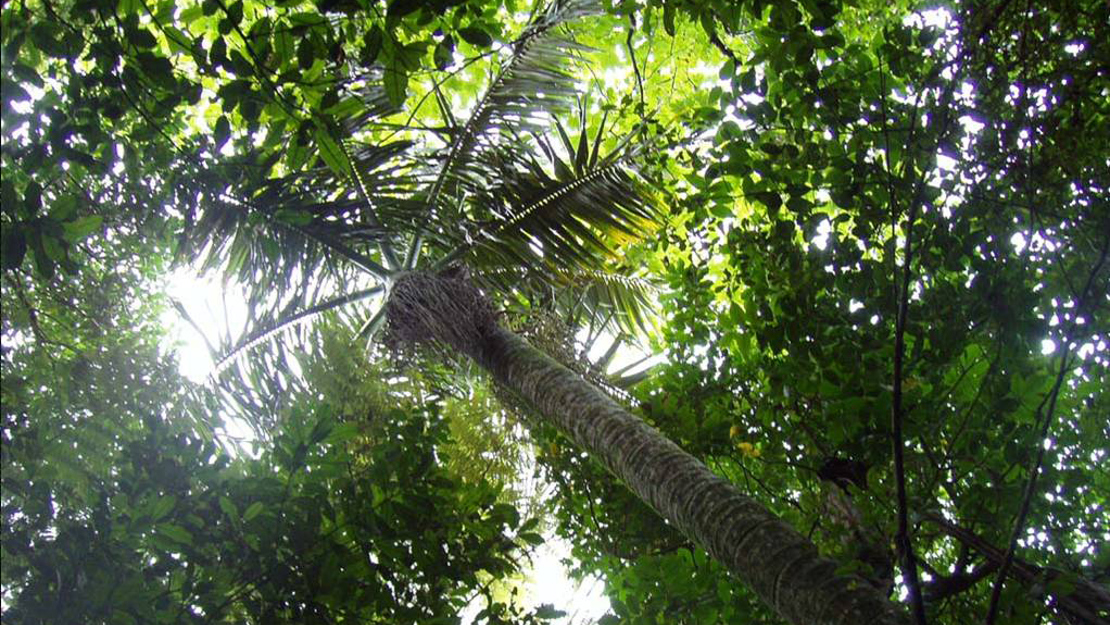
Regional Pest Management Plan (RPMP) status
- Whole region — Sustained control
- Parkland with Significant Ecological Areas — Site-led (on-park only)
- Waitākere Ranges Heritage Area priority status
- Hauraki Gulf Controlled Area Notice pest
General description
Tall palm < 14 m. Trunk is undivided and grey, with visible leaf scars and a uniform diameter. Leaves are pinnately divided. Flowers are purple and borne in hanging inflorescences. Fruit is spherical, green ripening to scarlet, and is present in autumn/winter.
What you need to know
To help protect our environment, from 1 September 2022, you:
- will not be allowed to breed, distribute, release or sell bangalow palm within the Auckland region. This includes selling within the Auckland region to out-of-region buyers.
- will not be allowed to plant bangalow palm within the Auckland region, unless you are transferring an existing plant on your land to another location within the boundaries of the same property.
- must destroy any bangalow palm on land that you occupy if it has been planted in breach of the above rules and you are directed to do so by an authorised person.
Habitats
Gullies, riparian margins, forested wetland, forest, moist soils, light gaps.
Dispersal
Seeds dispersed by birds and gravity. Human-mediated dispersal through deliberate plantings.
Impact on environment
Potential to invade intact native forest and displace native plants, especially nikau.
Control
Site Management
Follow up treated areas 3 times per year. Encourage natural regeneration of native plants or replant treated areas where possible after 2-3 treatments to establish dense ground cover and minimise reinvasion. Ensure correct identification and nikau are not controlled.
Recommended approaches
Physical control
Method: Dig out.
Plant parts requiring disposal: Seeds.
Disposal options: Small amounts can be rotted in a covered water barrel or remove to greenwaste or landfill.
Biocontrol
Biocontrol is currently not available for this species.
Community agrichemical control recommendations
No qualifications: Cut stump and paste freshly cut base of stems with glyphosate gel. Foliar spray seedlings with 20ml glyphosate green per 1L of water.
Basic Growsafe certified: Drill and inject trees with 500ml glyphosate per 1L of water if safe to do so. Drill 18mm holes (tangentially angled downwards) in a spiral up the trunk.
For 50mm stems drill one hole. For 100mm stems drill two holes. For larger stems drill holes 150mm apart.
Safety notes
Large trees must not be drilled that are closer than 1.5 times the height of the tree from paths, walkways and property.
Trees over 4 metres in height should be removed by a qualified arborist.
;Caution: When using any herbicide or pesticide please read the label thoroughly to ensure that all instructions and safety requirements are followed.
